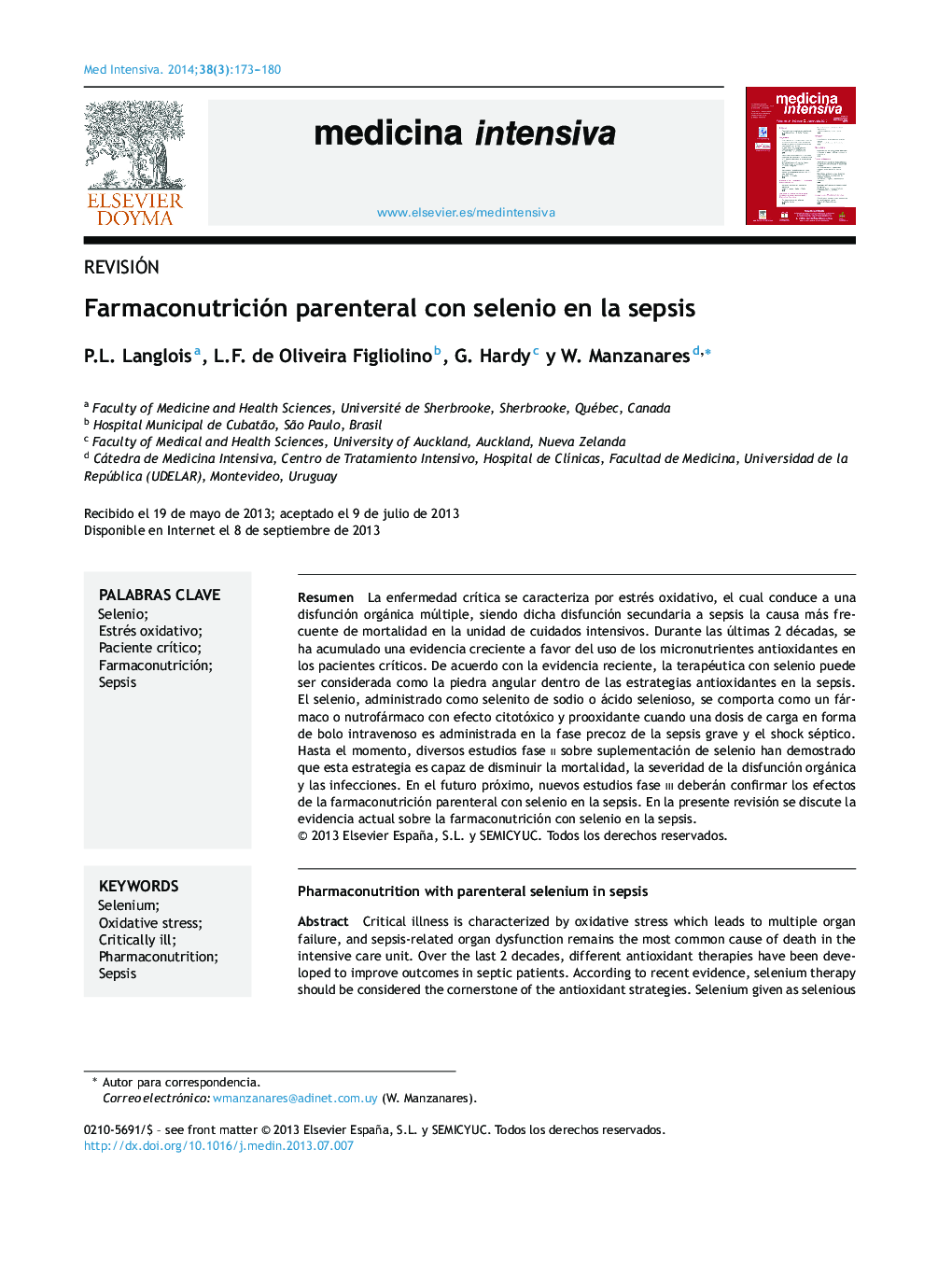| Article ID | Journal | Published Year | Pages | File Type |
|---|---|---|---|---|
| 3112713 | Medicina Intensiva | 2014 | 8 Pages |
Abstract
Critical illness is characterized by oxidative stress which leads to multiple organ failure, and sepsis-related organ dysfunction remains the most common cause of death in the intensive care unit. Over the last 2 decades, different antioxidant therapies have been developed to improve outcomes in septic patients. According to recent evidence, selenium therapy should be considered the cornerstone of the antioxidant strategies. Selenium given as selenious acid or sodium selenite should be considered as a drug or pharmaconutrient with prooxidant and cytotoxic effects when a loading dose in intravenous bolus form is administered, particularly in the early stage of severe sepsis/septic shock. To date, several phase ii trials have demonstrated that selenium therapy may be able to decrease mortality, improve organ dysfunction and reduce infections in critically ill septic patients. The effect of selenium therapy in sepsis syndrome must be confirmed by large, well designed phase iii clinical trials. The purpose of this review is to discuss current evidence on selenium pharmaconutrition in sepsis syndrome.
Keywords
Related Topics
Health Sciences
Medicine and Dentistry
Critical Care and Intensive Care Medicine
Authors
P.L. Langlois, L.F. de Oliveira Figliolino, G. Hardy, W. Manzanares,
